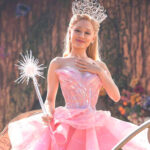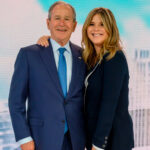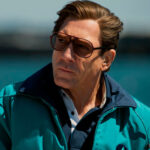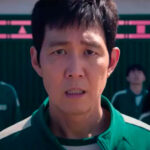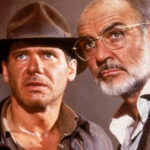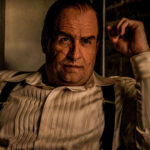

There are films that transcend time, marking generations and leaving a cultural legacy that endures for decades. “The Wizard of Oz,” released in 1939, is one of those cinematic treasures that continues to enchant audiences around the world to this day. This cinematic masterpiece not only captivated viewers with its thrilling story and memorable characters but also became a true icon of popular culture, filled with fascinating trivia that unveils the backstage and secrets behind the magic unfolding on screen.
In this text, we will explore some of these curiosities, delving into the behind-the-scenes of this timeless classic to discover the intriguing details that make “The Wizard of Oz” a truly magical experience.
1 – SWAPPING ACTORS
At the beginning of the casting process, Ray Bolger was offered the role of the Tin Man, but due to his great admiration for Fred Stone, the actor who played the Scarecrow in the initial version of the film in 1902, Bolger insisted on taking on that role and was successful in his request! This swap led Buddy Ebsen to assume the role of the Tin Man, but the silver makeup used contained aluminum powder, triggering an allergic reaction that led him to be hospitalized urgently due to inhalation of the pigment, which reached his lungs. As a result, he was dismissed from the film and replaced by Jack Haley. The situation left Buddy Ebsen deeply embarrassed.
2 – THE DWARFS WEREN’T INNOCENT
More than three hundred and fifty individuals of reduced stature were hired to portray the inhabitants of Munchkinland. They received a weekly salary of only fifty dollars, while Toto the dog, for the same period, received one hundred and twenty-five dollars. During the movie, only two dwarf voices can be identified because many lacked the vocal skills to sing or did not speak English fluently. Therefore, the Munchkins’ dialogue was dubbed by music professionals. An exception was made for those who delivered a bouquet of flowers to Dorothy, who did not require dubbing.
3 – JUDY GARLAND SUFFERED GREATLY BEHIND THE SCENES
Judy Garland wasn’t MGM’s first choice for the role of Dorothy, as L. Frank Baum’s book specified that the character was only ten years old. For this reason, the studio initially considered casting Shirley Temple, a prominent child star of the time, who bore similarities to Maísa Silva as a child. However, Temple’s fee was high, and she lacked vocal skills. Deanna Durbin was also considered, but as she was under contract with a competing studio, Universal, the role ended up being given to Judy.
In his memoir, “Judy and I: My Life With Judy Garland,” released only in 2017, Sidney Luft, who was married to the actress from 1952 to 1965, reported that she faced abuse from the actors portraying the munchkins. According to the account, “they believed they could escape any accusation by taking advantage of their small stature. They made Judy’s life hell on set, even going so far as to put their hands under her dress. Many of these men were forty years old or older.”
4 – THE WITCHES
Gale Sondergaard was initially chosen to portray the Wicked Witch of the West but declined the role due to concerns about not wanting to portray a villainous character with an unpleasant appearance in the film. It was then that Margaret Hamilton was selected for the role. When Hamilton contacted her agent to inquire about which role was being considered for her, the response was straightforward: “The witch, of course.”
Interestingly, despite her portrayal suggesting an advanced age, Margaret Hamilton was only 36 years old at the time of filming. On the other hand, Billie Burke, who played Glinda, the Good Witch of the North, was a beautiful and young-looking woman, but she was 54 years old, a rarity for women of her age in 1939 Hollywood.
5 – ACCIDENTS DURING FILMING
In addition to the incident with the first actor who portrayed the Tin Man, Jack Haley also faced difficulties due to the paint used to characterize the character: he nearly lost his sight and had to be hospitalized for four days due to a reaction to the pigment.
Margaret Hamilton had to take a break from filming for over a month after suffering burns during the scene where her character disappears from the land of the Munchkins. The heated makeup caused burns on her hands and face, and it was later discovered that one of the makeup components was copper, which overheated. The stunt double also suffered burns during filming.
During the shooting of a busy scene, one of the Witch’s guards accidentally stepped on Toto the dog’s paw, which ended up being broken. Since there was no stunt double available, as is common nowadays, filming had to be interrupted.
6 – DIFFERENCES FROM THE BOOK
In the book “The Wonderful Wizard of Oz,” published in 1900, the brick road was described as green; however, the decision to make it yellow came after a consensus that this new coloration would be more suitable for a film produced with Technicolor technology. Dorothy’s shoes also presented a color difference: originally, in the book, they were silver, but they were transformed into the iconic ruby red shoes for the film.
In the book, the Wicked Witch of the West was described as having only one eye, while in the film, she was depicted with both eyes.
7 – COSTUMES WERE A LOT OF WORK
Dorothy was only 10 years old in the book, which led Judy Garland to wear an extremely tight corset, intended to hide the actress’s breasts and hips, who was 16 years old at the time. It is said that this experience became traumatic for Garland, triggering a series of body image-related disorders over the years. At the end of her life, she struggled with addiction to weight-loss drugs, faced financial difficulties, attempted suicide several times, and ultimately died of an overdose in 1969, at the age of 47.
The Cowardly Lion’s costume, played by Bert Lahr, weighed over 100 pounds, was made with real lion skin parts, and was extremely hot. Due to the demands of Technicolor technology, the filming sets reached temperatures of up to 104°F. In these conditions, the actor would sweat profusely during filming, becoming completely soaked by the end of the day. Two people were tasked with dry cleaning the costume throughout the night so that it would be ready for use the next day, but even so, the resulting odor was quite unpleasant.
The prosthetic worn by the Lion prevented him from consuming solid foods, as it was partly made of brown paper, which could disintegrate. Consequently, he could only consume liquids, such as soups and milkshakes, for most of the filming.
The Scarecrow’s makeup consisted of a rubber prosthetic that mimicked fabric, making even the character’s facial lines visible. However, this mask left Bolger’s face marked when he removed it, taking over a year for the marks to completely disappear.
The extras playing the winged flying monkeys were suspended by piano strings and also suffered greatly. They were abruptly dropped to the ground as they were shot down in the scene.
8 – DELETED SCENES
Initially, the intention was to portray the Wicked Witch of the West as extremely villainous, but many of the scenes ended up being cut due to their extreme disturbance, becoming unsuitable for public viewing. The result was simply too terrifying.
After the premiere, the film’s producers chose to remove the song “The Jitterbug.” Although there are no official records of this song, some fragments filmed by an amateur camera confirm its existence. Those who had access to these images claim that the song indeed stood out from the rest of the film.
Interestingly, the film’s main song, “Over The Rainbow,” was on the verge of being excluded but was saved at the last moment by producer Arthur Freed. Louis B. Mayer, another producer, did not appreciate the scene in which Dorothy sings in a barn, surrounded by chickens and other animals.
9 – OTHER ADAPTATIONS
The universe of “The Wizard of Oz” goes far beyond the famous film, being just the adaptation of the first work in the Oz series. In total, there are 40 volumes, with only the first 14 authored by L. Frank Baum. Another 19 works were written by Ruth Plumly Thompson, while the remaining 7 were produced by various authors. This collection became known as “The Famous Forty.”
Due to the fact that the texts fell into the public domain, there have been numerous adaptations and versions of the stories, making it practically impossible to accurately catalog the exact number of works derived from “The Wizard of Oz.” Even the master of horror, Stephen King, created his own version, titled “Wizard and Glass,” released in 1997, which in Brazil was titled “Mago e Vidro.” This tale is present in the fourth volume of “The Dark Tower” series.
It is important to note that the renowned Broadway show titled “Wicked” is not part of the original collection but was created to explore the backstory of the Wicked Witch of the West and other characters from the universe of “The Wizard of Oz.”
10 – MYSTERIES NO ONE CAN EXPLAIN
It is said that the narrative conceived by L. Frank Baum reflects his own beliefs. The author was affiliated with the Theosophical Society, an organization dedicated to exploring occult themes. According to this theory, the spiral yellow brick road, the witches of the East and West, as well as certain passages of the film, are imbued with religious symbolism.
For some scholars, the Wizard would represent a metaphor for God, conveying the idea that the divinity for which everyone longs to fulfill their desires is actually an illusion. Dorothy’s three companions on her journey – the Scarecrow, the Tin Man, and the Cowardly Lion – who seek a brain, a heart, and courage, respectively, symbolize attributes that are already intrinsically present in each of them, not needing an external entity to grant them.
There is also another legend suggesting a connection between the album “The Dark Side of the Moon” by the band Pink Floyd and the film. Supposedly, the sequence of songs on the album would fit perfectly into the narrative of the story, but the band denies any intentional relation with the film.
In short, “The Wizard of Oz” continues to enchant and intrigue viewers of all ages, decades after its release. Behind the colorful and magical facade of the film, we find a rich treasure trove of curiosities and fascinating details that reveal the challenges faced during its production and the various interpretations its story has sparked over the years. From the tumultuous behind-the-scenes to theories about its deeper meaning, every aspect of this cinematic classic seems to contain a new layer of mystery and wonder.
Thus, “The Wizard of Oz” is not just a masterpiece of entertainment but an endless source of inspiration and debate, continuing to captivate and surprise current and future generations with its lasting power of enchantment.
